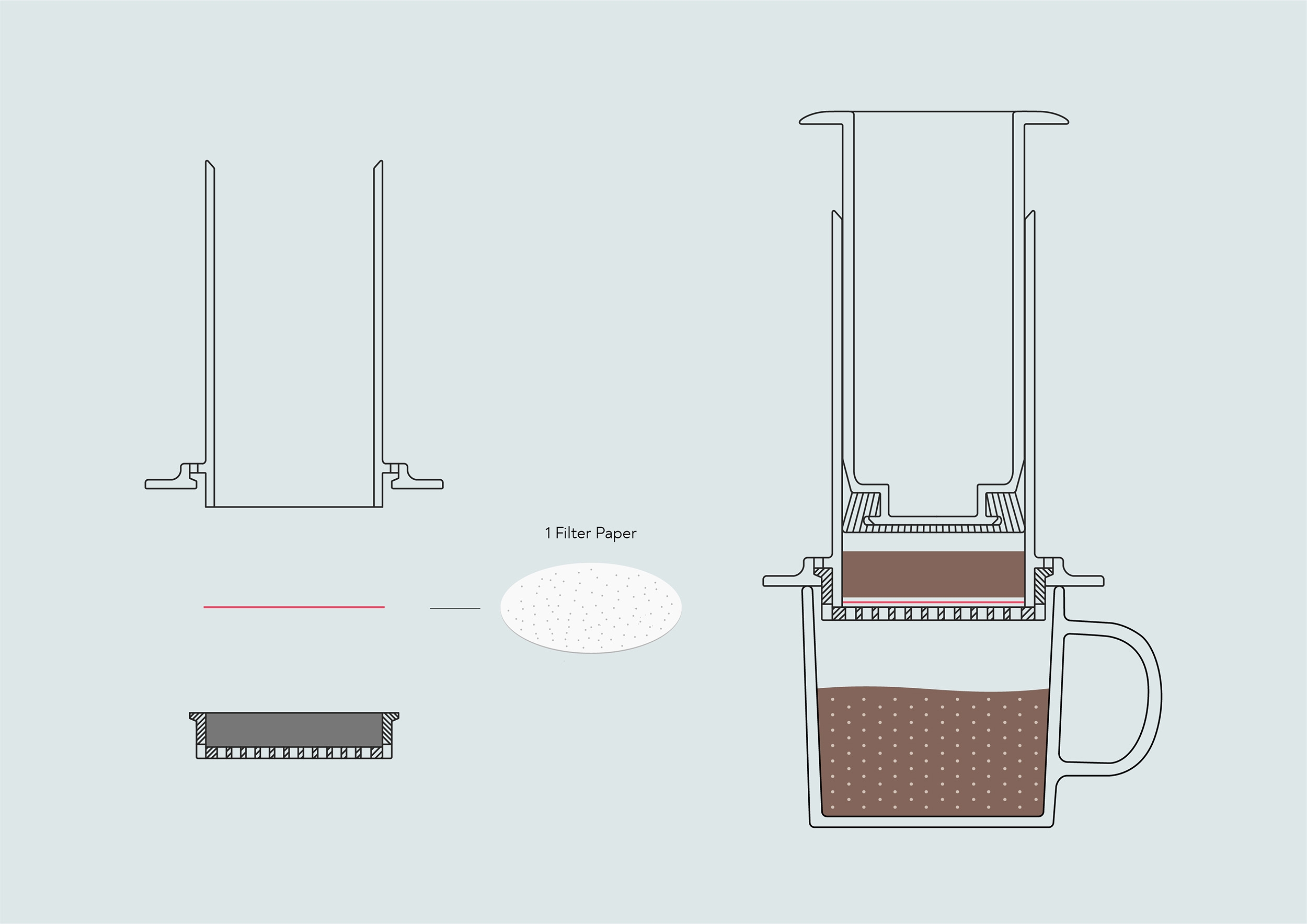We asked Bulgarian scientist, Nasko Panov, to run some tests for us using a UV spectrophotometer, which measures the light absorption of particles in suspension. He used a method developed by Ph.D. Kevin L. Goodner for measuring turbidity in tea.
There were 4 specific goals of the experiment:
- Does layering 2 papers reduce turbidity compared to using just one paper?
- Is turbidity lower if you allow a coffee bed to settle onto the paper before you plunge in comparison with starting plunging right after inverting the AeroPress?
- Does squeezing the last bit of air out make any difference to the turbidity?
- What’s the difference in turbidity if you plunge very slowly and gently compared with pressing fast and hard?
Below is a summary of what Nasko discovered. During this series of experiments, Nasko used a basic Inverted AeroPress recipe as a control to compare the other approaches to. This is the recipe he used for the control:
If you would like to read in detail about these experiments, you can find them here in a white paper Nasko prepared for us on this subject.
Two Filter Papers
In the table below, there are the results for the standard recipe used for comparison with all other samples. In the same table is the comparison with the same recipe but using 2 paper filters.

As expected, when two paper filters are used in AeroPress the turbidity is less. This is due to the additional filtration through the second filter and the higher probability for fines to be retained. The difference is not big, but still detectable. This is also a confirmation that the method is working – the experiment is confirming the observation.
 The standard recipe for inverted AeroPress, using one filter paper.
The standard recipe for inverted AeroPress, using one filter paper.